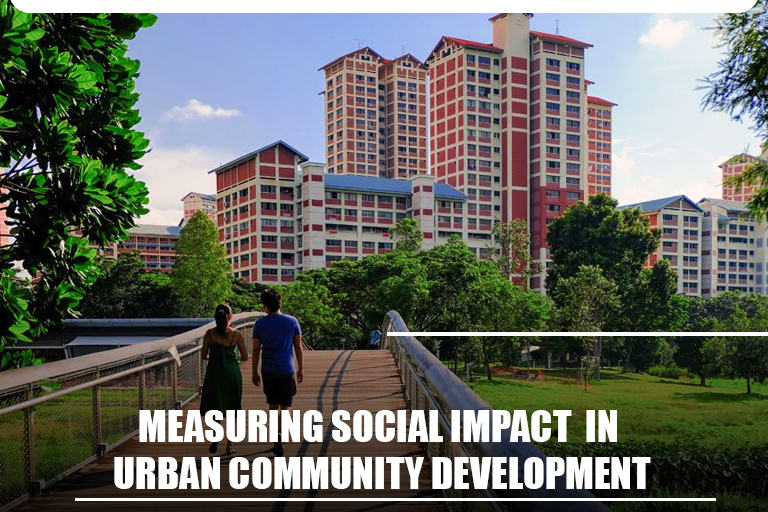In the realm of urban community development, the pursuit of progress goes beyond mere brick and mortar. While revitalized infrastructure and economic growth are undoubtedly important, the true essence of a thriving urban community lies in its social fabric. Understanding and quantifying the social impact of development projects is crucial to ensure that the intended improvements translate into tangible benefits for the people who call these communities home. However, measuring social impact in such complex contexts goes beyond numbers; it requires a nuanced approach that considers qualitative factors, community engagement, and long-term sustainability.
The Challenge of Measuring Social Impact
Traditional metrics for evaluating urban development projects often focus on economic indicators such as GDP growth, job creation, and infrastructure investments. While these factors contribute to a community’s well-being, they only provide a partial view of its overall health. The challenge lies in capturing the intricate and intangible dimensions of social impact, including changes in social cohesion, cultural preservation, education, access to healthcare, and overall quality of life. These aspects are integral to a community’s resilience and vitality.
Beyond Numbers: Embracing Qualitative Factors
To truly understand the social impact of urban community development, it is essential to embrace qualitative data alongside quantitative metrics. Qualitative data, derived from community narratives, testimonials, and ethnographic studies, offer insights into the lived experiences of residents. It allows us to appreciate the emotional and psychological transformations resulting from development initiatives. By listening to the voices of those directly affected, we can gain a deeper understanding of how a project has influenced their sense of belonging, empowerment, and well-being.
Community Engagement as a Cornerstone
One cannot measure social impact effectively without involving the community in the evaluation process. Active community engagement not only helps in the collection of accurate data but also empowers residents to have a say in shaping the narrative of their development journey. Engaging stakeholders at various stages of a project ensures that the development aligns with the community’s needs and aspirations. It also promotes a sense of ownership and accountability, fostering a stronger commitment to sustaining positive changes over time.
Long-Term Sustainability: A Holistic Perspective
The true mark of successful urban community development lies in its ability to generate lasting impact. Often, short-term indicators fail to capture the long-term consequences of interventions. A holistic perspective involves assessing the sustainability of social impact by examining whether positive changes endure beyond the project’s completion. This may include factors like the resilience of local businesses, the continuity of community programs, and the preservation of cultural heritage. Long-term sustainability emphasizes the need for development that transcends generations.
Conclusion
Measuring social impact in urban community development goes beyond the constraints of conventional numbers and spreadsheets. It requires a shift in focus from economic outcomes to the intricate nuances of social well-being. By embracing qualitative data, engaging the community, and adopting a holistic perspective, we can better assess the genuine transformations occurring within urban communities. Balancing tangible progress with intangible benefits is the key to fostering resilient, vibrant, and inclusive urban spaces where residents thrive not just as economic agents but as empowered and fulfilled individuals.
Read more:- Empowering Communities: Effective Strategies For Local Grassroots NGOs
Read More:- Effortless Elegance: Top 5 Style Tips for Skinny Guys to Dress to Impress

